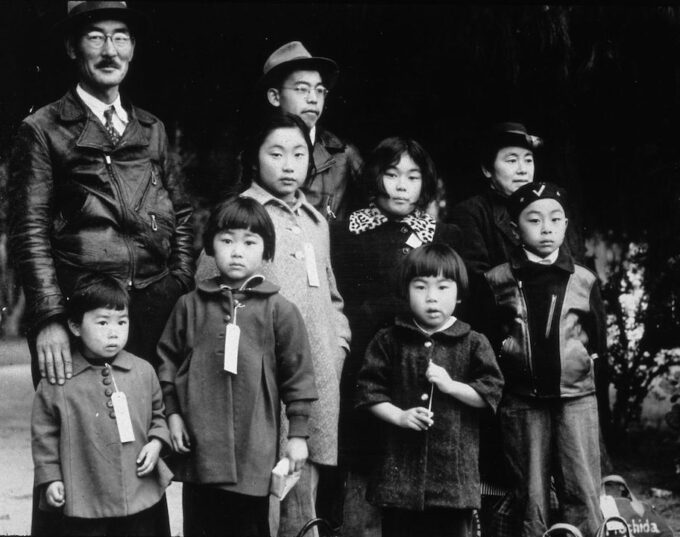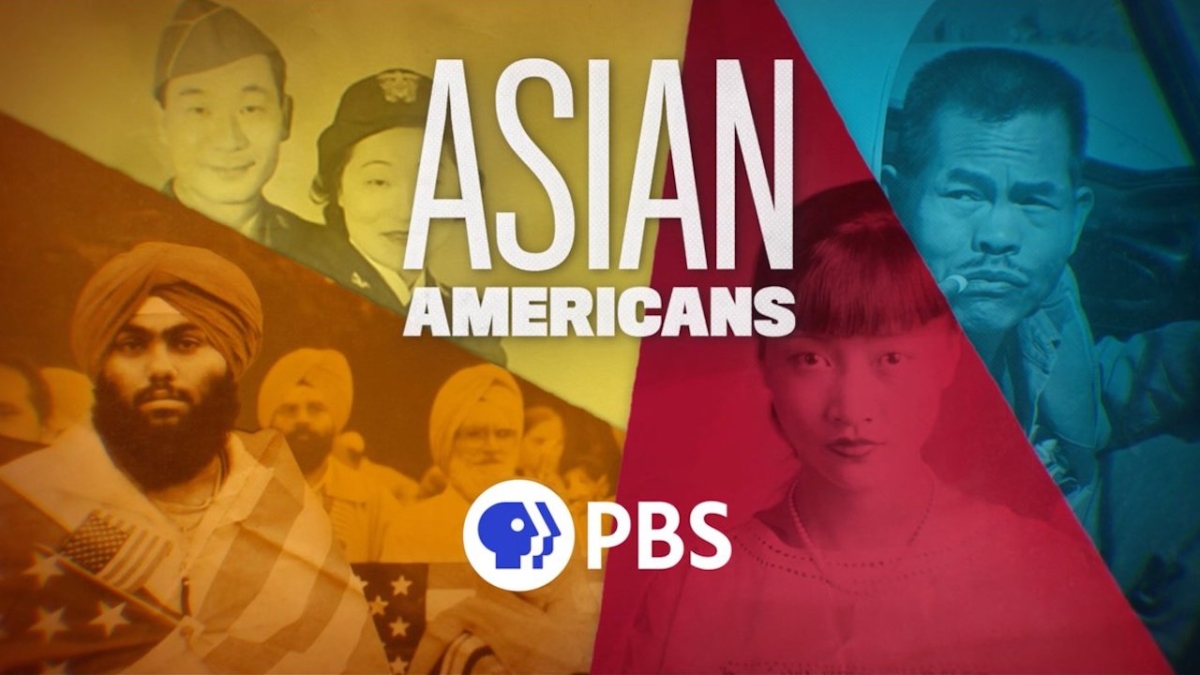Written By: Kano Umezaki
This is the first article to a two-part series reviewing the “Asian Americans”
For Asians who are often made invisible in the American colonial imagination, documentary filmmaking becomes a crucial praxis for revisionist storytelling. In the recent PBS documentary series, “Asian Americans,” Asian American filmmakers rely on both oral history and visual archives to chronicle through Asian Americans’ incessant resistance and survival from the early formation years of the United States to today.
The five-part docuseries was an extensive, multi-platform initiative. It was a production of WETA Washington D.C. and the Center for Asian American Media (CAAM) for PBS, in association with Independent Television Service (ITVS), Flash Cuts and Tajima-Peña Productions. To assist the new docuseries, the Asian Americans Advancing Justice – Los Angeles also developed free K-12 lesson plans to inspire Asian American youth to engage deeper with their histories. From production to execution, this series was a community-driven and community-centered initiative. Each episode was produced, narrated, and propelled by Asian American filmmakers, producers, scholars, activists, politicians and descendants of remembered icons. Although this docuseries isn’t a complete telling of Asian American history –– and it also omits narratives of pervasive anti-Blackness rooted in our respective communities –– it nevertheless weaponizes storytelling to correct popular and collective memory.
Asian American history has too often focused on East Asians –– particularly the Chinese and Japanese diaspora –– but this docuseries counters such essentialized portrayals of Asian American history by chronicling through the lives of early Southeast and South Asian migrants. Episode one, ”Breaking New Ground,” begins with the U.S. colonization of the Philippines in the late 19th century. We get a brief portrait of Antero Cabrera, one of the 1,100 Filipinos recruited to the U.S. as display subjects for a “human zoo.” Though Cabrera was racialized as “savage-like” and “backwards” by the Western colonial imagination, he was motivated to gain material access in the U.S., showing how these primitivized, “othered” peoples were not without political agency. Similarly, Moksad Ali, a Muslim silk trader, played to the fantasies of the exoticized East to please white settlers who expected him to perform in orientalized ways. The lives of Cabrera and Ali reveal how racialized Asians teased the colonial imagination, namely the Western fetish for domestic tourism, as a means to gain material and social access for survival.
The episode later dedicates itself to Chinese immigration and their unfinished integration into the United States. The Chinese Exclusion Act of 1882 was the first U.S. law that banned a group solely on the grounds of their race, and it made Chinese people’s citizenship easily revocable. As Erika Lee, author of “The Making of Asian America,” notes in the series, “Chinese Americans became the first undocumented immigrants,” and their racialization helped define the carceral mechanisms that continue to legitimize arrest and deportation today. In other words, Asian American’s historical exclusion is a crucial component to understanding America’s abstract notions of citizenship and nationhood.
American history also fails to mention the legal and material impacts of Asian women’s racialized, gendered migration into the imperial core. Many Asian women were brought to the U.S. to cement colonially-imposed heteronormativity and quell the sexual fantasies of cis-hetero men; and in the process of their immigration, they were also politically marked as patriarchal subjects with little to no social mobility. Episode one mentions the case of Wong Shee (Wong Toy Heung) who was a Chinese woman sent to detention on Angel Island solely because she was a widowed woman stripped of a social status. Shee’s case imparts the harsh reality of Chinese women immigrants, whose citizenship was only mapped onto them if they were linked to a husband; or, in other words, if they could prove their heteronormativity to the imperial enterprise.
The episode ends at Promontory, Utah at the 150th anniversary of the completion of the transcontinental railroad. At its completion in 1869, Chinese laborers were deliberately excluded from commemorative photos despite their extensive sacrifices. A century and a half later, we now see Elaine Chao, Secretary of Transportation, lead the service for the railroad’s anniversary. However, the film omits Chao’s controversial role as part of the Trump administration, as well as her previous role serving the Wells Fargo Board of Directors, where she oversaw residential lending practices that led to hundreds of customers being foreclosed on and losing their homes. Though some Asian Americans have celebrated her role in politics as a community achievement, we must adamantly remind ourselves to go beyond the commercial, representational politics of liberalism. Because, as we continue to witness, the racialization of COVID-19 as the “Chinese virus” or “Kung-Flu” has been yet another mythical trajectory spurred by U.S. orientalism and its imperialist discourse at large. Despite Asian Americans, particularly East Asian Americans, obtaining social mobility, the Yellow Peril rhetoric of Asian despotism and deviance still remains. Therefore, we must understand how no amount of assimilation or approximation to whiteness will set us free from this imperial chokehold.

Episode two, “A Question of Loyalty,” revisits World War II and the domestic and transnational impacts it had on Asian Americans. One of the most compelling stories is that of Buddy Uno, a Nisei who went back to Japan because of limited opportunities in the United States. Because of Buddy’s American citizenship status, he sided with masculinist, pro-Japanese nationalism, and eventually went on to write articles extolling the strengths of the Imperial Japanese Army. Meanwhile, Buddy’s brothers remained in the U.S. and fought for the 442nd Battalion, a highly decorated army unit made of mostly Nisei men. In a tragic family saga, the Uno family became caught between two greedy imperialist nations, having to sacrifice their loyalty to each other in a dire attempt to prove they were not domestic threats.
During this time, Korean Americans began to side with the U.S. army to resist Japan’s aggressive military invasion in Korea. Susan Ahn, the first women gunnery officer to enlist in the U.S. navy, says in the film, “When you’re Korean, you have no country and the Japanese are the predators.” Susan situates herself in warfare to combat imperialist Japanese aggression abroad, and she later goes on to become a code breaker for the National Security Association (NSA). The case of Susan Ahn and the Uno brothers reveals how Asian Americans entered the U.S. military during WWII for two political reasons: (1) to become socially accepted as non-perilous citizens and (2) to resist Japanese imperialism. Despite Asian Americans being racialized as interchangeable by the Western imaginary, revisionist history illuminates how we each face starkly different experiences regarding citizenship, colonization and land sovereignty.
The orientalization of Asians was further consolidated through media, as seen indexed in popularized Hollywood cinema. Episode two briefly mentions the perpetual cultural entrapment of some of the first Asian American actors. We see how Anna May Wong was limited to playing stereotypical roles of the hyper-sexualized seductress or treacherous “Dragon Lady”. We see Nisei actor, Sessue Hayakawa, type-casted as the domineering villain who holds a civilized exterior but fetishized, exotic interior. We also see Susan Ahn’s older brother, Phillip Ahn, proudly play the role of aggressive, Japanese soldiers because he, like his sister, harnessed a deep animosity for the Imperial Japanese Army. Episode two juxtaposes Yellow Peril depictions on cinema with the transnational, social impacts of WWII in order to bridge a connection between orientalization and its material consequences on the Asian American community.
American concentration camps of Japanese immigrants, legal exclusion of Chinese immigrants, deportation of Southeast Asians, and exploitation of Asian working-class labor, are just some examples of the material impacts of orientalism. On a more expansive scope, orientalization also has traumatic transnational impacts, as seen with the extrapolation of feminized labor and natural resources from Asia, extensive bombing and subsequent severing of the Korean nation, recent immigration ban on members of the Chinese Communist Party, the American war in communist Vietnam, colonization of the Philippines, and the list goes on. Therefore, in the larger context of persisting orientalism within the imperial core, “Asian Americans” serves as a crucial documentary project to counter, with the ultimate goal of dismantling, the colonial Western imagination and its processes of imperial knowledge-production.
For Asian Americans, and diasporic Asians in general, counter-narratives are pivotal to our cultural and memorial restoration. In particular, counter-narratives are crucial to dismantling deeply embedded cultural myths of orientalism that continue to have detrimental material impacts on our respective communities. In a world where we’re forced to grow up with feelings of cultural disbelongings, community-centered documentary filmmaking and its educational initiatives can help ground us to our respective and shared beginnings.

